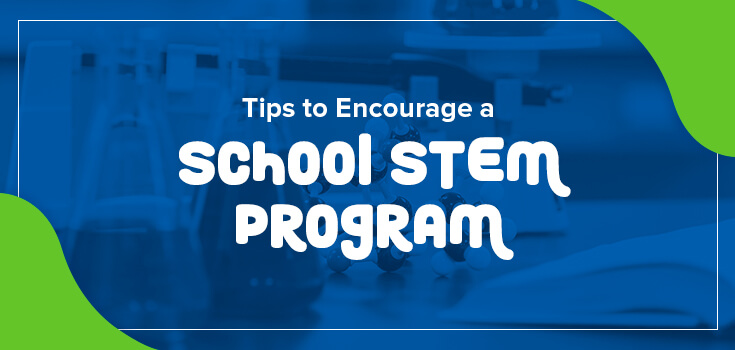Does it seem like every school except yours has a STEM program in place? STEM programs are popular, and teachers, administrators and parent volunteers want to implement them. Many want to bring the value of STEM learning to their K-12 students but haven’t figured out how to make a STEM program a reality.
Though it takes a bit of groundwork to start a STEM program, it is easier than you might think. We have some steps you can follow to fulfill your goal of having more school-related STEM opportunities in place.
1. Do Your Homework
Unless you already have a STEM program in mind, like a partnership with an existing STEM club, you can expect to start yours from scratch. Accordingly, you’ll want to investigate other STEM programs around the country.
Get ready to be surprised. From space camps to inventors’ clubs, there’s many STEM options out there. To help narrow your search, concentrate on a specific area such as engineering, computer programming, forensic analysis or robotics. That way, you can focus on what matters most to your program.
2. Create a Modest STEM Program Proposal
Once you’ve found a few STEM ideas to get the ball rolling, start fleshing out your STEM program idea and map out how your vision looks. Would it be best to offer an in-person club for interested kids twice monthly? Are you thinking of launching your STEM learning online to remove the need for a physical location?
This vision will become the framework for the proposal you can make to your principal, department head or school board. Remember that it’s best to start small. You don’t want to incorporate too much at first, especially if you haven’t run a STEM program before. Many educators prefer to collaborate with existing STEM after-school providers with proven track records.
3. Know Your Budget Needs
Some STEM clubs are more expensive to operate than others. For instance, maybe you’re thinking about starting a STEM program to enter into a big competition. Be sure you know how large to make your budget. Many competitions require your student to use specific kits or have entry fees that exceed what you expected to spend.
Having an idea of a budget at the beginning ensures that you can speak confidently when asking your administration or board to consider allocating money toward a STEM program. You want to have evidence-based answers when asked about cost expectations.
4. Create a Few Example Lesson Plans
Lesson planning for a STEM program is slightly different from lesson planning for the classroom. You’ll want to make sure your lesson aligns with your school’s vision and goals. However, you don’t have to assign grades or pull together tests. STEM programs are forums where children learn to think creatively about problems in a safe environment that promotes experimentation and sees errors as chances to learn.
To help you on your way, search for STEM lesson plan models and matrices online. You’ll find plenty of examples to replicate and alter. Remember to keep everything straightforward — your lessons don’t have to be complex to excite students.
Need Help Starting a STEM Program?
Creating a STEM program is a rewarding experience for everyone from students to instructors. Contact Science Explorers if you want to learn about starting and getting support for a STEM program. Our team members would be happy to share our advice.

